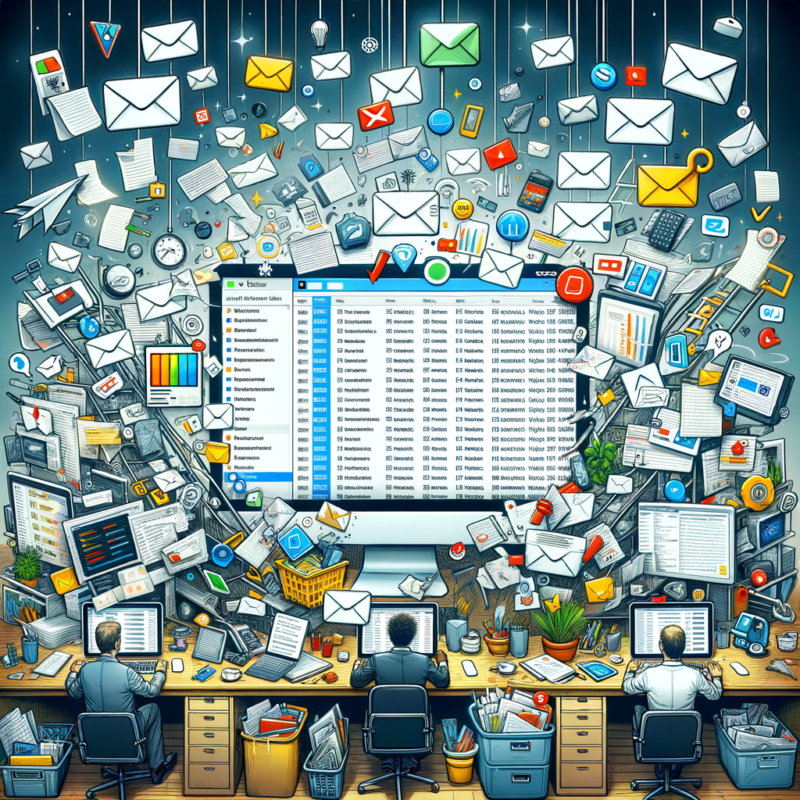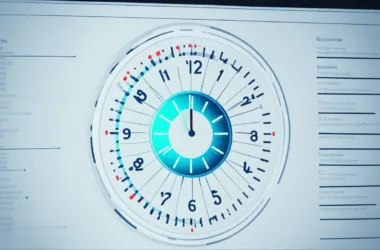Feeling overwhelmed by emails at your software engineer job? This guide is your key to inbox sanity with powerful email management strategies! Learn proven techniques from big tech companies (like Amazon, Google, and Meta) to tame your inbox and boost productivity. We’ll cover prioritizing emails, using labels, and more. No matter your experience level, this guide will help you conquer email management and become a communication pro.
Understanding the Importance of Email Management
Before we dive into the strategies, it’s crucial to understand why email management is essential for powerful performance. For software engineers, emails carry not just usual communication, but also serve as repositories of important updates, changes, bug reports, and meeting notes. Mismanagement of these crucial digital documents can lead to overlooked action items and missed deadlines, spelling disaster for your work efficiency and team’s performance.
Desired Outcomes of Effective Email Management
- Increased Productivity: Reduced backlog means you can promptly handle task-related emails and spend valuable time on important projects.
- Better Organization: A well-managed email system helps in avoiding duplications, efficiently retrieving information, and ensuring an easy-to-navigate communication system.
- Improved Communication: Clear, concise, and structured email communication enables smooth information flow and facilitates mutual understanding within the team.
Strategies for Managing Software Engineer Emails
Here are some time-proven strategies for effectively managing email and other forms of communication in the realm of software engineering.
Tip#1: Prioritize Your Emails
Not all emails demand equal attention or even need your attention. By learning to prioritize your emails, you can swiftly focus on emails requiring immediate responses and delay dealing with less urgent ones. To make this more accessible, you can utilize the star feature in Gmail or the flag feature in Outlook. Once you’ve gone through your emails, it’s best to make it a habit to immediately categorize them into “To Do”, “Awaiting Response”, and “Done”.
Tip#2: Utilize Email Filters and Labels
Email providers such as Gmail and Outlook offer robust filtering and labeling capabilities. With these features, users can effortlessly organize their inbox by automatically categorizing, labeling, or archiving emails. This functionality extends to diverse parameters including sender details, recipient information, subject matter, and specific keywords present within the email content. By harnessing these advanced tools, individuals can streamline their email management process, ensuring important messages are readily accessible while minimizing clutter and enhancing overall productivity. Whether prioritizing communication from key contacts, sorting messages by topic, or efficiently storing correspondence for future reference, the sophisticated filtering and labeling options provided by Gmail and Outlook empower users to tailor their email experience to suit their unique preferences and workflow requirements.
This is how I personally like to label my emails.
- Clarity and Specificity: Use clear and specific labels that accurately reflect the content of the email. Avoid generic labels like “Important” – instead, use “Meeting Agenda – Marketing Project.”
- Action-Oriented Labels: Consider using labels that indicate the next action required. This can be helpful for prioritizing tasks. For example, a label like “Action Required – Design Feedback” highlights emails needing your immediate attention.
- Project-Based Labels: Create labels for specific projects or initiatives. This ensures all project-related emails are grouped together for easy reference. For instance, a label named “Project Phoenix Development” keeps all emails related to that project organized.
- Team-Specific Labels: If you collaborate frequently with specific teams, consider creating team labels. This allows you to quickly locate emails from a particular team and streamline communication. An example could be a label titled “Sales Team – Q3 Pipeline Update.”
- Topic-Based Labels: Utilize labels for recurring topics you encounter in your emails. This can be helpful for categorizing emails related to bug reports, feature requests, or client communication. For instance, labels like “Bug Report – Login Functionality” or “Client Inquiry – Pricing” can be useful.
Tip#3: Set Apart Fixed Time for Emails
Allocate dedicated time slots throughout the day for reviewing and managing your email correspondence. Continuously interrupting your workflow to check emails can fragment your focus and impede productivity. Instead, establish designated intervals to address your inbox, allowing for uninterrupted concentration on important tasks during other periods. Additionally, for critical communications, consider configuring notifications for emails originating from specific senders or pertaining to urgent matters. By adopting this structured approach to email management, you can optimize efficiency, minimize distractions, and maintain a productive workflow throughout your day.
Tip#4: Collaborative Tools for Team Communication
When facilitating communication and collaboration within your team, it’s advantageous to leverage dedicated platforms like Slack, Microsoft Teams, or Google Workspace as opposed to relying solely on email. These collaborative tools offer a myriad of benefits, including streamlined team discussions, seamless file sharing capabilities, real-time updates, and enhanced coordination to ensure alignment across all team members. By embracing these specialized platforms, you create an environment that fosters open communication, encourages active participation, and facilitates efficient teamwork. Whether it’s brainstorming ideas, sharing project updates, or coordinating tasks, these collaborative tools provide a centralized hub for all team-related activities, ultimately optimizing workflow efficiency and promoting greater productivity within your team dynamic.
Additional Ingenious Email Hacks
Alongside the above strategies, here are some nifty tips and tricks to keep your email productivity at its peak:
- Use the search function effectively: Most email clients such as Gmail or Outlook have robust search features. Learn to use them effectively for faster email retrieval.
- Turn off unnecessary email notifications: Receiving too many email notifications can disrupt your workflow. Optimize your notifications for crucial emails and mute the less important ones.
- Use canned responses for frequently sent emails: Most email clients offer a feature to save and re-use frequent responses. Use this feature to save time on commonly sent emails.
- Seamlessly integrate your email system with your project management tool: This optimizes tasks, aids in keeping track of deadlines, and facilitates easy access to task-related discussions.
Conclusion
A software engineer’s productivity goes hand-in-hand with effective communication management. By implementing the strategies highlighted above, you can tame your repeatedly overflowing inbox and stay on top of your game. Remember, the aim isn’t to achieve a zero inbox, but a well-managed one. So, redefine your work productivity by re-engineering your email and communication strategies.






